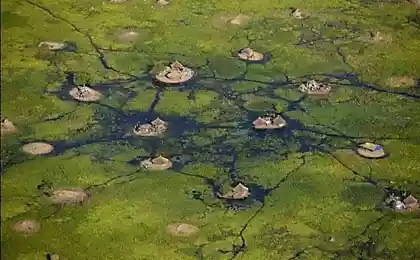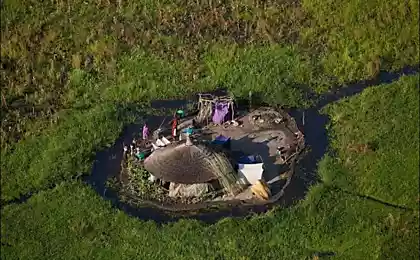696
Life in the Sudd swamp
The African continent is well-known for its arid climate and vast desert, which greatly complicates the conditions of life in his country. And if you talk about the Sudan, it is virtually endless desert territory in which it is almost impossible to conduct any agriculture. But man - being special, and the main difference is its ability to adapt to any, even the most difficult environmental conditions. This clearly demonstrates the indigenous people of the Sudan, who are happy to have mastered the Sudd swamp impassable, which lie in the valley of the White Nile.
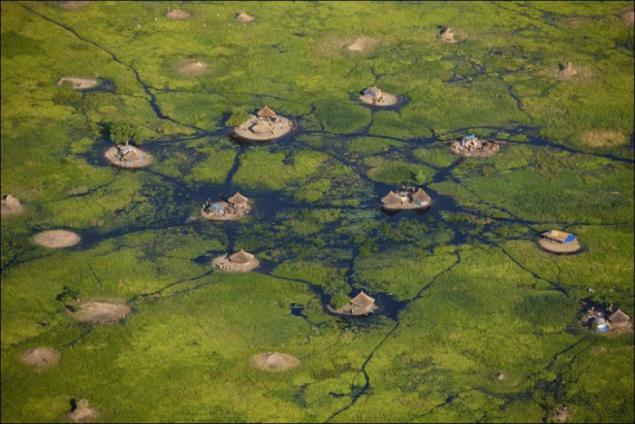
The huge territory of swamps takes 30 000 square kilometers at the usual time of up to 130 000 square kilometers during the rainy season. During this period, it heats a little local river meadows, pouring countless streams, canals and swamps, which are constantly changing their location. Because of this it's almost impossible to drive any car or swim in the water, the more lush vegetation that clog passages and makes it impossible to pass any kind of transport.

However, choosing between the dry desert and vast marshy area, Sudanese chose the latter, and this is a good reason. The fact is that in this constantly flooded terrain comfortably manage to co-exist a huge number of species of flora and fauna, and the soil is very fertile. These factors allow local communities to successfully engage in agriculture and livestock breeding, which greatly outweighs the terrible living conditions.

The inaccessibility of the local area has long complicated the road travelers and research scientist, so this area is still poorly understood. We only know that this region - the largest swamp in the world.
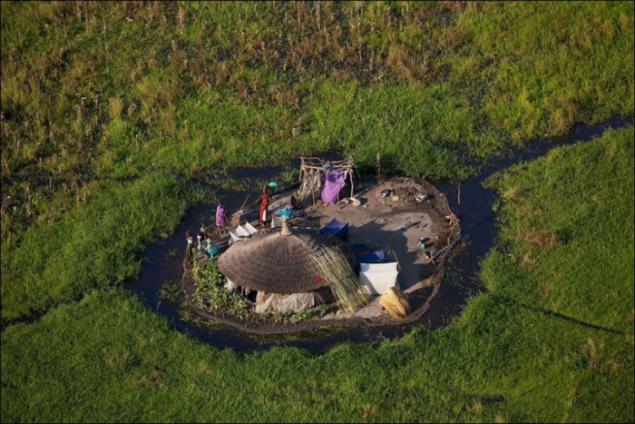
Despite the difficult conditions, the Sudanese authorities made an attempt to solve the transport problem Sudd marshes - in the seventies of the last century, there were planning to build a canal Jonglei, which was to simplify the way of vessels on the White Nile. However, it is envisaged to dry the swamp, which is very negative impact on the local natural to microclimate. In any case, the attempt was unsuccessful - after 240 km of paved canal project ceased to exist due to the civil war in the country, and today the Sudd swamps remain in their previous form.



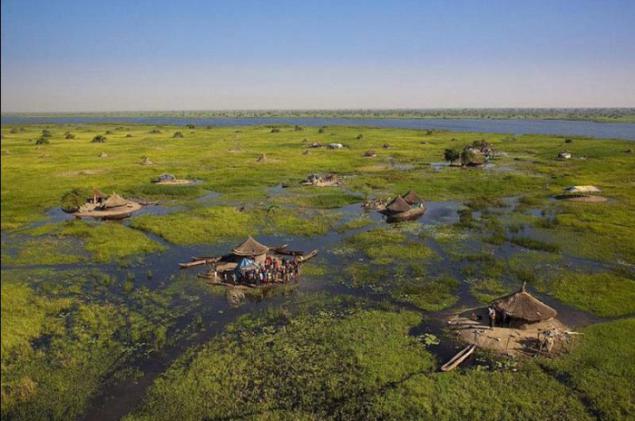
©

The huge territory of swamps takes 30 000 square kilometers at the usual time of up to 130 000 square kilometers during the rainy season. During this period, it heats a little local river meadows, pouring countless streams, canals and swamps, which are constantly changing their location. Because of this it's almost impossible to drive any car or swim in the water, the more lush vegetation that clog passages and makes it impossible to pass any kind of transport.

However, choosing between the dry desert and vast marshy area, Sudanese chose the latter, and this is a good reason. The fact is that in this constantly flooded terrain comfortably manage to co-exist a huge number of species of flora and fauna, and the soil is very fertile. These factors allow local communities to successfully engage in agriculture and livestock breeding, which greatly outweighs the terrible living conditions.

The inaccessibility of the local area has long complicated the road travelers and research scientist, so this area is still poorly understood. We only know that this region - the largest swamp in the world.

Despite the difficult conditions, the Sudanese authorities made an attempt to solve the transport problem Sudd marshes - in the seventies of the last century, there were planning to build a canal Jonglei, which was to simplify the way of vessels on the White Nile. However, it is envisaged to dry the swamp, which is very negative impact on the local natural to microclimate. In any case, the attempt was unsuccessful - after 240 km of paved canal project ceased to exist due to the civil war in the country, and today the Sudd swamps remain in their previous form.




©
